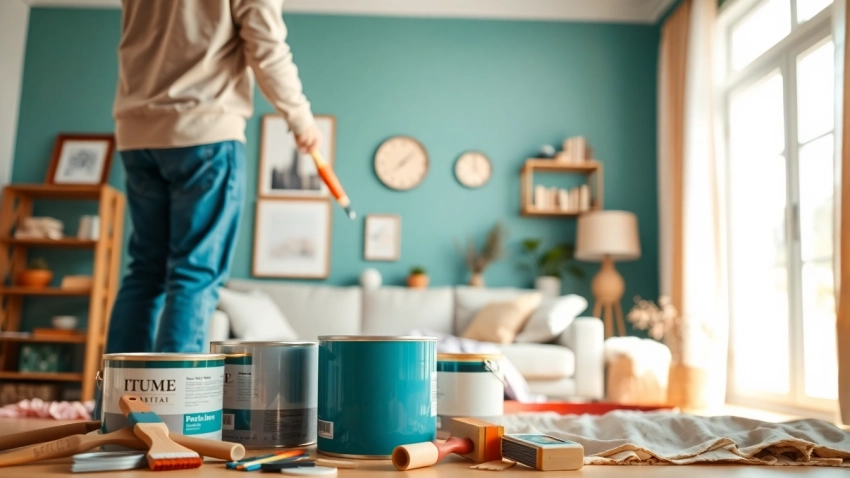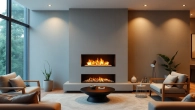
Expert Tips and Insights on Interior Painting for Your Home
Understanding Interior Painting
What is Interior Painting?
Interior painting refers to the process of applying paint to the walls, ceilings, trim, and indoor structures of a building. This practice allows homeowners to enhance the aesthetic appeal of their living spaces, protect surfaces from damage, and even modify the ambiance of a room through color selection. Interior painting is not merely a superficial job; it involves a well-rounded understanding of various aspects like paint types, application techniques, and surface preparation. Whether you’re refreshing a single room or an entire home, interior painting can bring a new lease on life to your surroundings.
Benefits of Interior Painting
Engaging in interior painting has a variety of benefits:
- Aesthetic Value: New colors can dramatically change how a room looks and feels, influencing mood and perception.
- Increased Property Value: Well-painted interiors are appealing to prospective buyers, making your home more attractive in the real estate market.
- Protection: Paint serves as a barrier against moisture, dust, and other damaging elements that can degrade walls and ceilings over time.
- Personalization: Interior painting lets homeowners express their style. Custom color palettes make a space uniquely yours.
- Freshness: New paint can remove accumulated stains, dirt, and smudges, promoting a cleaner, healthier indoor environment.
Choosing the Right Paint for Your Interior
When selecting paint for interior applications, consider the following factors:
- Type of Paint: Water-based paints are easy to clean and dry quickly, while oil-based paints offer durability and a smoother finish.
- Finish: Matte, eggshell, satin, semi-gloss, and gloss finishes each lend different qualities to a room. For example, satin finishes are good for high-traffic areas due to their washability.
- Color Psychology: Different colors evoke different emotions. For example, blues can create calm, while yellows can invigorate a space.
- Eco-friendliness: Opt for low-VOC or zero-VOC paints to maintain better indoor air quality.
Preparing for Interior Painting
Key Steps Before You Start
Preparation is critical for effective interior painting. Here are steps to take before you apply the first stroke:
- Assess the Space: Evaluate the condition of walls and surfaces. Look for holes, chips, or textures that need repair.
- Select Colors: Test small samples of chosen colors on the walls to see how they look in different lighting throughout the day.
- Plan Your Approach: Consider whether you’ll hire professionals or tackle the job yourself, setting a timeline and budget for the project.
Tools and Materials Needed
Gather the right tools to ensure a smooth painting experience:
- Paint (the right type and color)
- Brushes and rollers (different sizes for various surfaces)
- Painter’s tape (to create sharp lines)
- Drop cloths (to protect floors and furniture)
- Paint trays and liners
- Sandpaper and patching materials
- Safety gear (gloves, masks, goggles)
Preparing Your Space for Painting
Before you begin painting, it’s essential to prepare your space:
- Clear the Area: Move furniture and cover remaining items with drop cloths to protect from excess paint splatters.
- Clean Surfaces: Dust and wash walls as necessary to ensure paint adheres correctly.
- Make Repairs: Fix any cracks, holes, or imperfections to create a flawless surface for painting.
Techniques and Best Practices
Common Interior Painting Techniques
Some effective methods to consider when painting include:
- Cutting In: Use a brush to paint edges and corners that a roller cannot reach.
- Rolling: For flat surfaces, rolling is efficient and provides an even coat.
- Sponging and Rag Rolling: These techniques create special textured effects for a more personalized appearance.
Expert Tips for a Flawless Finish
To enhance the quality of your work:
- Invest in quality paint and tools—high-quality materials yield better results.
- Apply multiple thin coats rather than a single thick coat to avoid drips and achieve better coverage.
- Be patient; allow sufficient drying time between coats to prevent smudging and streaking.
DIY vs. Professional Interior Painting Services
Understanding the pros and cons of each option is vital. Here’s a brief look:
- DIY: Cost-effective if you are experienced and have time. However, it can be labor-intensive and may result in less professional-quality results if not done correctly.
- Professional Services: Provide expertise, efficiency, and a guaranteed finish. Generally advisable for larger or more complicated projects.
Cost Considerations for Interior Painting
Factors Influencing Interior Painting Costs
The final cost will depend on several factors:
- Size of the space—larger rooms require more materials and time.
- Type of paint selected—premium paints often cost more but may require fewer coats.
- Labor costs in your area—more skilled painters may charge higher rates.
Average Pricing Breakdown
Understanding common pricing can guide your budget:
- Bathroom (20-100 sq.ft.): $60 – $400
- Bedroom (200-310 sq.ft.): $600 – $1,240
- Kitchen (200-360 sq.ft.): $600 – $1,320
- Living Room (300-400 sq.ft.): $900 – $1,600
Budgeting for Your Interior Painting Project
When establishing a budget, consider the costs for both materials and labor. Create a contingency fund of about 10-15% for unexpected expenses. Also, always examine quotes from different providers if hiring professional services.
Aftercare and Maintenance
Cleaning Up After Your Interior Painting
Once your painting project is complete, proper cleanup is crucial. Follow these steps:
- Remove painter’s tape while the paint is slightly tacky to avoid peeling.
- Clean brushes and rollers immediately after use to preserve your tools.
- Take care of leftover paint; seal cans tightly for future touch-ups.
Maintaining Your Newly Painted Interior
To keep your interior looking fresh:
- Regularly dust walls and trim to minimize dirt buildup.
- Use mild soap and water for cleaning; avoid harsh chemicals that could damage the paint.
- Touch up any scuffs or scratches as soon as they occur to maintain the integrity of your paint job.
Recognizing When to Repaint Your Interiors
Knowing when to repaint can extend the life and aesthetic of your interiors. Signs that it may be time to repaint include:
- Visible cracks or peeling paint
- Fading colors or stains
- Chipping or other imperfections that diminish visual appeal
Interior painting is more than a job; it’s an investment in your home. For a comprehensive guide, consult professionals and consider interior painting to transform your space effectively.












Leave a Reply